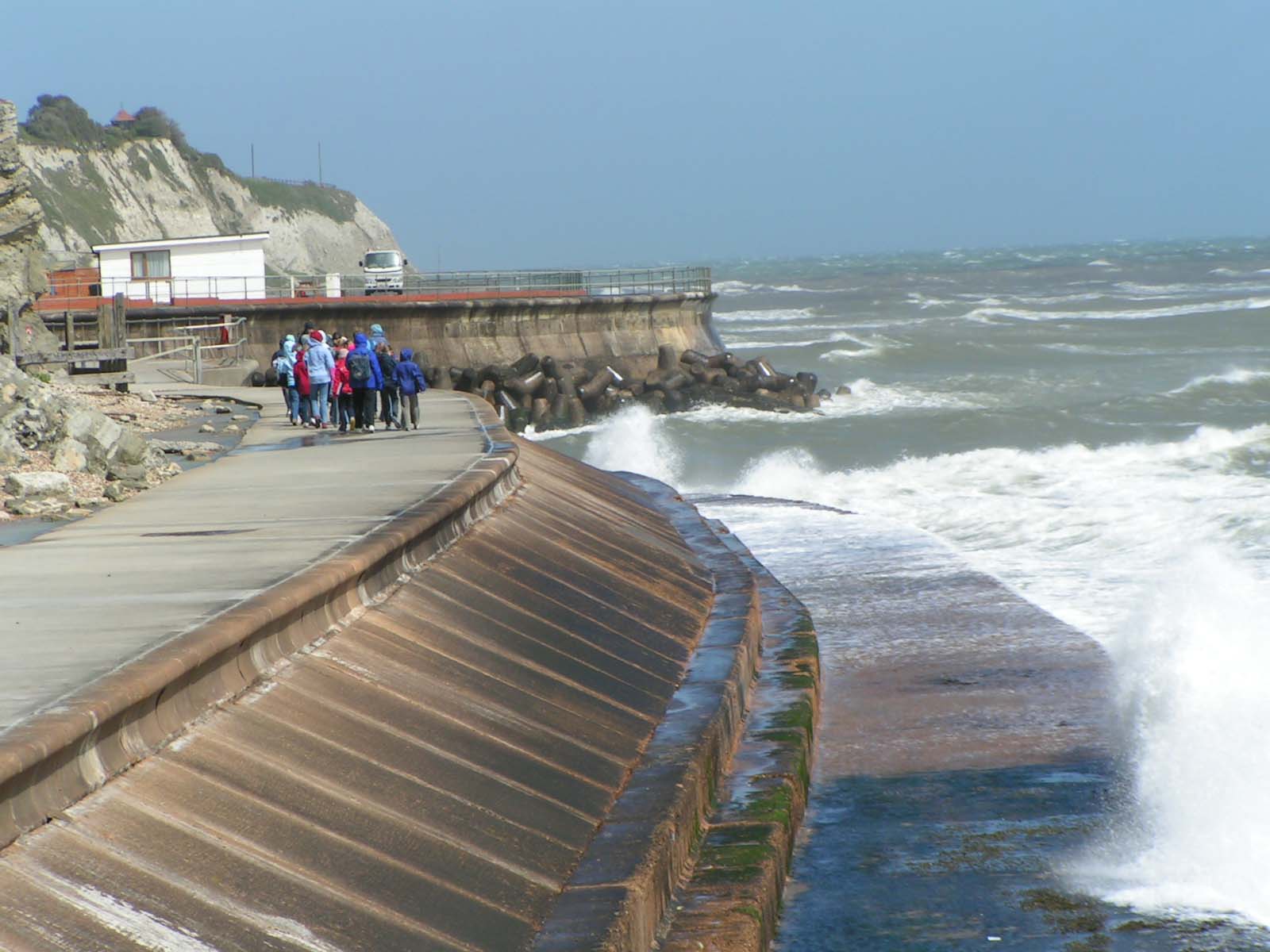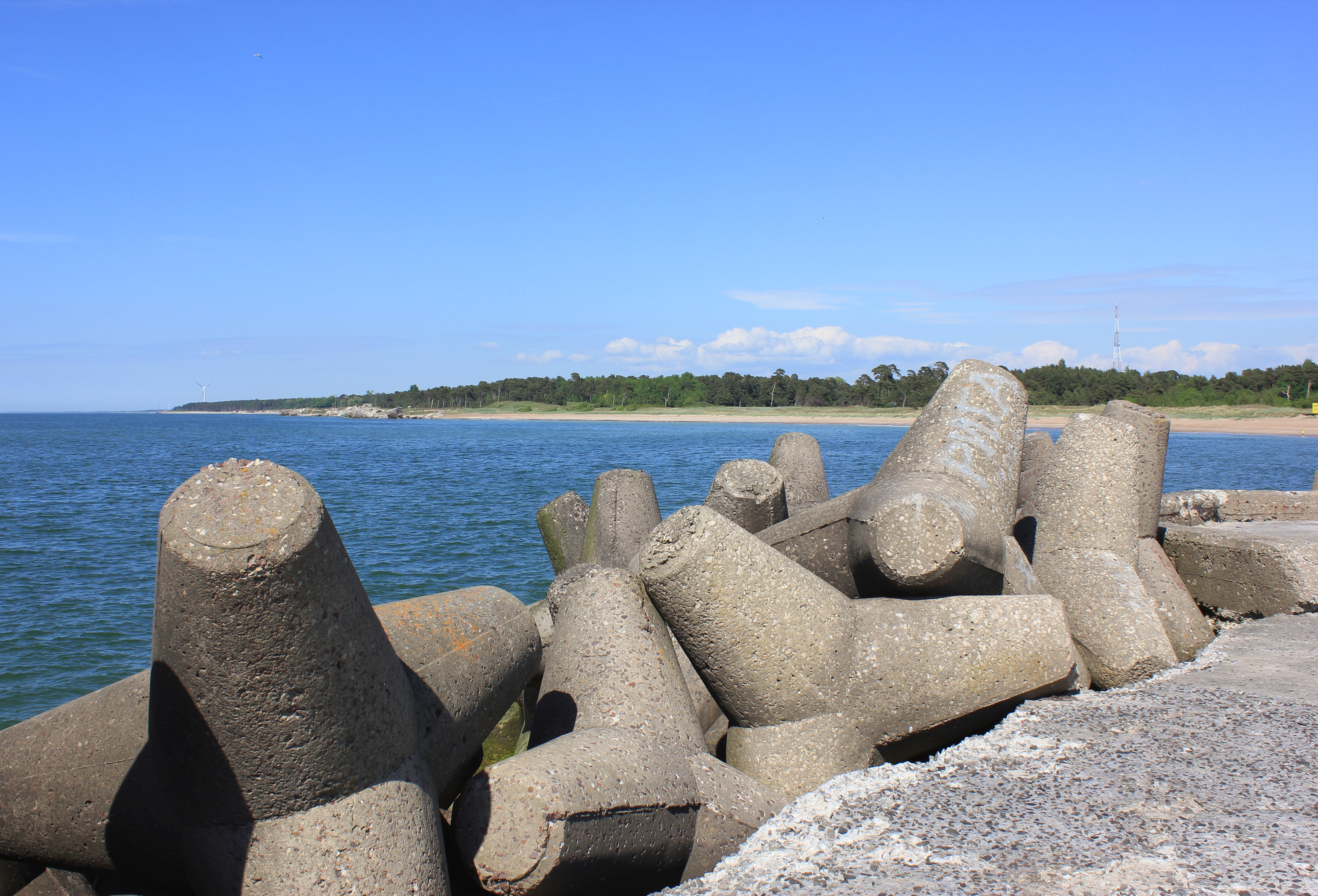|
Accropode
Accropode blocks are wave-dissipating concrete blocks designed to resist the action of waves on breakwaters and coastal structures. History The Accropode is a single-layer artificial armour unit developed by Sogreah in 1981. Accropode concrete armour units are applied in a single layer. The Ecopode armour unit with a rock-like appearance was developed by Sogreah to enhance the natural appearance of concrete armourings above low water level. A patent application was filed in 1996. The color and type of rock-like appearance can be specified to match the surrounding landscape. In 1999, Sogreah modified the original Accropode shape by chipping away excess materials and adding friction features in the form of small pyramids. A patent application was filed for this modified shape. In 2004 further modifications to the 1999 shape were made, resulting in the Accropode II. The shape modifications are intended to increase interlocking. Design Hydraulic stability Specified sta ... [...More Info...] [...Related Items...] OR: [Wikipedia] [Google] [Baidu] |
Accropode
Accropode blocks are wave-dissipating concrete blocks designed to resist the action of waves on breakwaters and coastal structures. History The Accropode is a single-layer artificial armour unit developed by Sogreah in 1981. Accropode concrete armour units are applied in a single layer. The Ecopode armour unit with a rock-like appearance was developed by Sogreah to enhance the natural appearance of concrete armourings above low water level. A patent application was filed in 1996. The color and type of rock-like appearance can be specified to match the surrounding landscape. In 1999, Sogreah modified the original Accropode shape by chipping away excess materials and adding friction features in the form of small pyramids. A patent application was filed for this modified shape. In 2004 further modifications to the 1999 shape were made, resulting in the Accropode II. The shape modifications are intended to increase interlocking. Design Hydraulic stability Specified sta ... [...More Info...] [...Related Items...] OR: [Wikipedia] [Google] [Baidu] |
Accropode2
Accropode blocks are wave-dissipating concrete blocks designed to resist the action of waves on breakwaters and coastal structures. History The Accropode is a single-layer artificial armour unit developed by Sogreah in 1981. Accropode concrete armour units are applied in a single layer. The Ecopode armour unit with a rock-like appearance was developed by Sogreah to enhance the natural appearance of concrete armourings above low water level. A patent application was filed in 1996. The color and type of rock-like appearance can be specified to match the surrounding landscape. In 1999, Sogreah modified the original Accropode shape by chipping away excess materials and adding friction features in the form of small pyramids. A patent application was filed for this modified shape. In 2004 further modifications to the 1999 shape were made, resulting in the Accropode II. The shape modifications are intended to increase interlocking. Design Hydraulic stability Specified stabi ... [...More Info...] [...Related Items...] OR: [Wikipedia] [Google] [Baidu] |
Xbloc
An Xbloc is a wave-dissipating concrete block (or "armour unit") designed to protect shores, harbour walls, seawalls, breakwaters and other coastal structures from the direct impact of incoming waves. The Xbloc model was designed and developed by the Dutch firm Delta Marine Consultants, now called BAM Infraconsult, a subsidiary of the Royal BAM Group in 2001 and has been subjected to extensive research by several universities. Benefits vs other systems Concrete armour units are generally applied in breakwaters and shore protections. The units are placed in a single layer as the outer layer of the coastal structure. This layer is called the armour layer. Its function is twofold: (1) to protect the finer material below it against severe wave action; (2) to dissipate the wave energy to reduce the wave run-up, overtopping and reflection. These functions require a heavy, but porous armour. Common factors to apply single layer concrete armour units are: * natural rock is unavailable ... [...More Info...] [...Related Items...] OR: [Wikipedia] [Google] [Baidu] |
Seawall
A seawall (or sea wall) is a form of coastal defense constructed where the sea, and associated coastal processes, impact directly upon the landforms of the coast. The purpose of a seawall is to protect areas of human habitation, conservation and leisure activities from the action of tides, waves, or tsunamis. As seawall is a static feature it will conflict with the dynamic nature of the coast and impede the exchange of sediment between land and sea. Seawall designs factor in local climate, coastal position, wave regime (determined by wave characteristics and effectors), and value (morphological characteristics) of landform. Seawalls are hard engineering shore-based structures which protect the coast from erosion. Various environmental issues may arise from the construction of a seawall, including the disruption of sediment movement and transport patterns. Combined with a high construction cost, this has led to an increasing use of other soft engineering coastal management o ... [...More Info...] [...Related Items...] OR: [Wikipedia] [Google] [Baidu] |
Wave-dissipating Concrete Block
A wave-dissipating concrete block is a naturally or manually interlocking concrete structure designed and employed to minimize the effects of wave action upon shores and shoreline structures, such as quays and jettys. Examples include such proprietary designs as the Tetrapod, Accropode, Xbloc, KOLOS, and Dolos A dolos (plural: dolosse) is a wave-dissipating concrete block used in great numbers as a form of coastal management. It is a type of tetrapod. Weighing up to , dolosse are used to build revetments for protection against the erosive force of .... See also * * * * * * * {{annotated link, Seawall * ... [...More Info...] [...Related Items...] OR: [Wikipedia] [Google] [Baidu] |
Artificial Reef
An artificial reef is a human-created underwater structure, typically built to promote marine life in areas with a generally featureless bottom, to control erosion, block ship passage, block the use of trawling nets, or improve surfing. Many reefs are built using objects that were built for other purposes, such as by sinking oil rigs (through the Rigs-to-Reefs program), scuttling ships, or by deploying rubble or construction debris. Other artificial reefs are purpose-built (e.g. the reef balls) from PVC or concrete. Shipwrecks may become artificial reefs when preserved on the seafloor. Regardless of construction method, artificial reefs generally provide hard surfaces where algae and invertebrates such as barnacles, corals, and oysters attach; the accumulation of attached marine life in turn provides intricate structures and food for assemblages of fish. History The construction of artificial reefs began in ancient times. Persians blocked the mouth of the Tigris River to ... [...More Info...] [...Related Items...] OR: [Wikipedia] [Google] [Baidu] |
KOLOS
Kolos may refer to: ;People * Kolos (name), a first or last name ;Sports *Kolos (sports society), a Ukrainian sports society *Kolos Stadium (Borispil), a multifunctional stadium in Boryspil, Ukraine * FC Kolos Bykovo, a soccer team based in Bykovo, Volgograd Oblast, Russia *FC Kolos Kovalivka, a soccer team based in Kovalivka, Kyiv Oblast, Ukraine * FC Kolos Krasnodar, a soccer team based in Krasnodar, Russia * FC Kolos Pokrovskoye, a soccer team based in Pokrovskoye, Rostov Oblast, Russia *FC Kolos Nikopol, name of FC Elektrometalurh-NZF Nikopol, a soccer team based in Nikopol, Ukraine, in 1970–1991 *FC Kolos Pavlohrad, former name of FC Kosmos Pavlohrad, a former soccer team based in Pavlohrad, Ukraine *FC Kolos Poltava, former name of FC Vorskla Poltava FC Vorskla Poltava ( uk, ФК «Во́рскла» Полта́ва ) is a Ukrainian professional football club based in Poltava that competes in the Ukrainian Premier League, the top flight of Ukrainian football. Histor ... [...More Info...] [...Related Items...] OR: [Wikipedia] [Google] [Baidu] |
Ocean Surface Wave
In fluid dynamics, a wind wave, water wave, or wind-generated water wave, is a surface wave that occurs on the free surface of bodies of water as a result from the wind blowing over the water surface. The contact distance in the direction of the wind is known as the ''fetch''. Waves in the oceans can travel thousands of kilometers before reaching land. Wind waves on Earth range in size from small ripples, to waves over high, being limited by wind speed, duration, fetch, and water depth. When directly generated and affected by local wind, a wind wave system is called a wind sea. Wind waves will travel in a great circle route after being generated – curving slightly left in the southern hemisphere and slightly right in the northern hemisphere. After moving out of the area of fetch, wind waves are called '' swells'' and can travel thousands of kilometers. A noteworthy example of this is waves generated south of Tasmania during heavy winds that will travel across the Pacif ... [...More Info...] [...Related Items...] OR: [Wikipedia] [Google] [Baidu] |
Coastal Erosion
Coastal erosion is the loss or displacement of land, or the long-term removal of sediment and rocks along the coastline due to the action of waves, currents, tides, wind-driven water, waterborne ice, or other impacts of storms. The landward retreat of the shoreline can be measured and described over a temporal scale of tides, seasons, and other short-term cyclic processes. Coastal erosion may be caused by hydraulic action, abrasion, impact and corrosion by wind and water, and other forces, natural or unnatural. On non-rocky coasts, coastal erosion results in rock formations in areas where the coastline contains rock layers or fracture zones with varying resistance to erosion. Softer areas become eroded much faster than harder ones, which typically result in landforms such as tunnels, bridges, columns, and pillars. Over time the coast generally evens out. The softer areas fill up with sediment eroded from hard areas, and rock formations are eroded away. Also erosion commonly ... [...More Info...] [...Related Items...] OR: [Wikipedia] [Google] [Baidu] |
Riprap
Riprap (in North American English), also known as rip rap, rip-rap, shot rock, rock armour (in British English) or rubble, is human-placed rock or other material used to protect shoreline structures against scour and water, wave, or ice erosion. Ripraps are used to armor shorelines, streambeds, bridge abutments, foundational infrastructure supports and other shoreline structures against erosion. Common rock types used include granite and modular concrete blocks. Rubble from building and paving demolition is sometimes used, as well as specifically designed structures called tetrapods. Riprap is also used underwater to cap immersed tubes sunken on the seabed to be joined into an undersea tunnel. Environmental effects Sediment effects Ripraps cause morphological changes in the riverbeds they surround. One such change is the reduction of sediment settlement in the river channel, which can lead to scouring of the river bed as well as coarser sediment particles. This can be combat ... [...More Info...] [...Related Items...] OR: [Wikipedia] [Google] [Baidu] |





